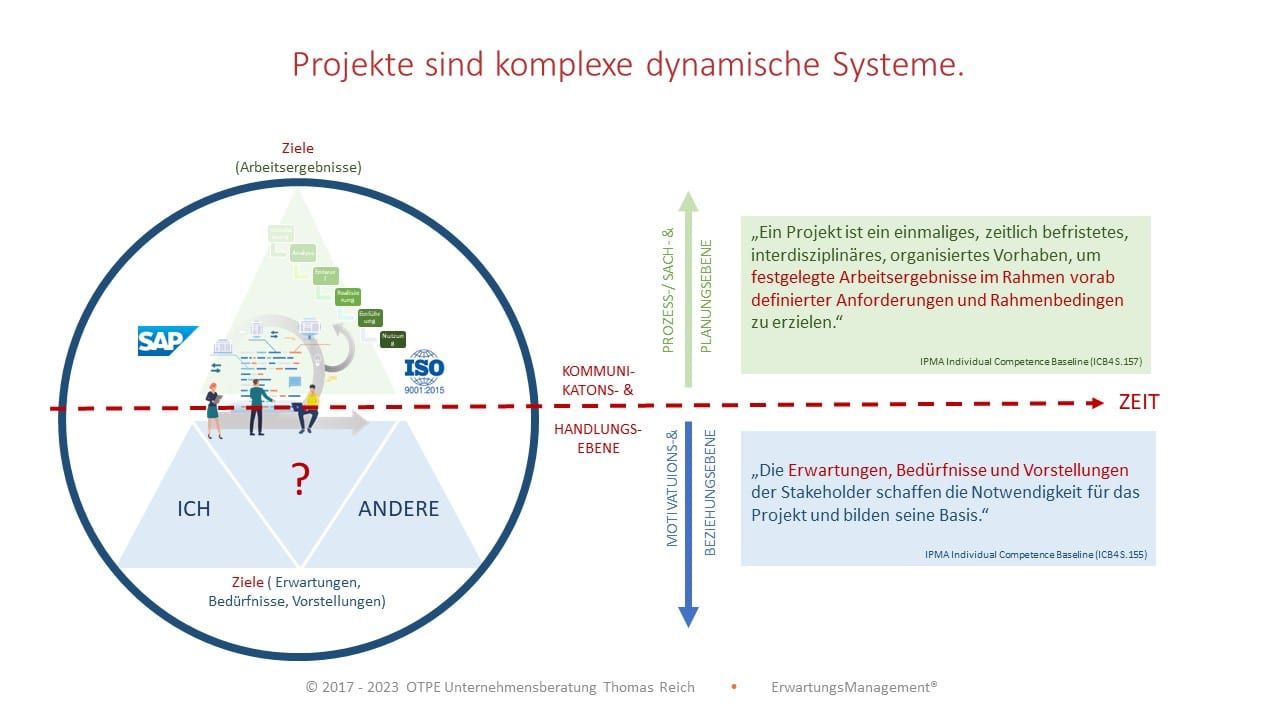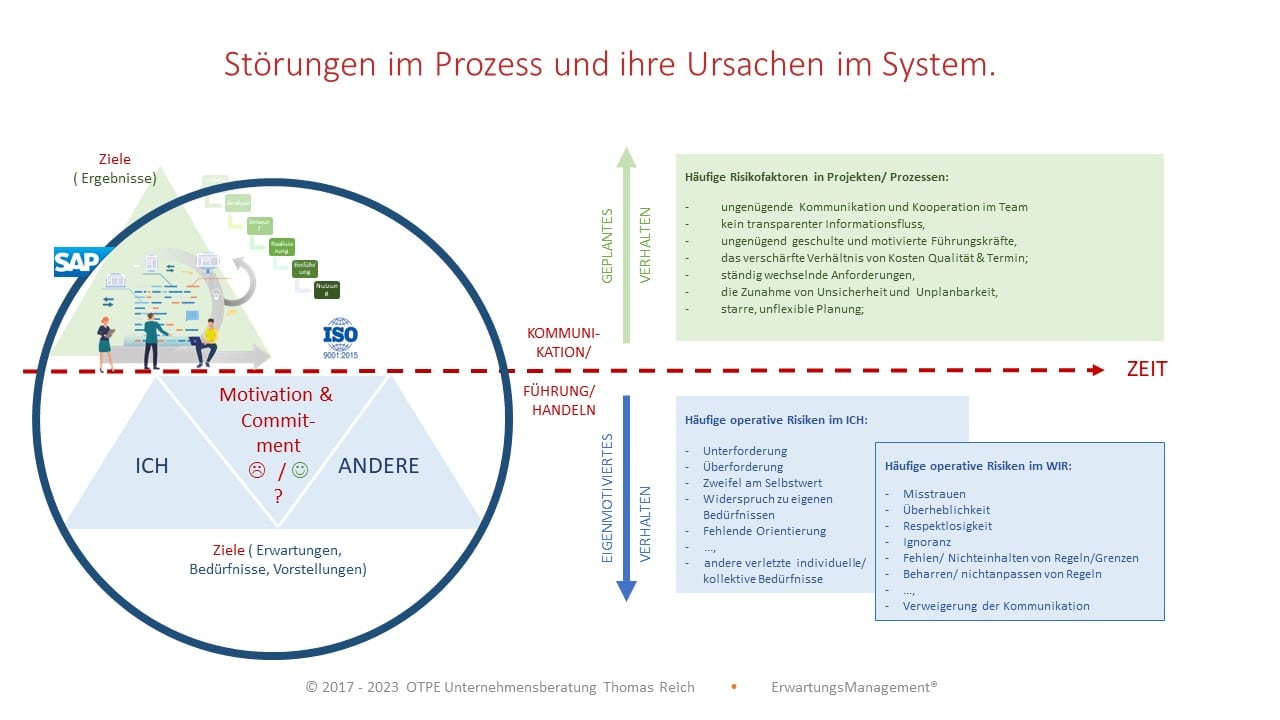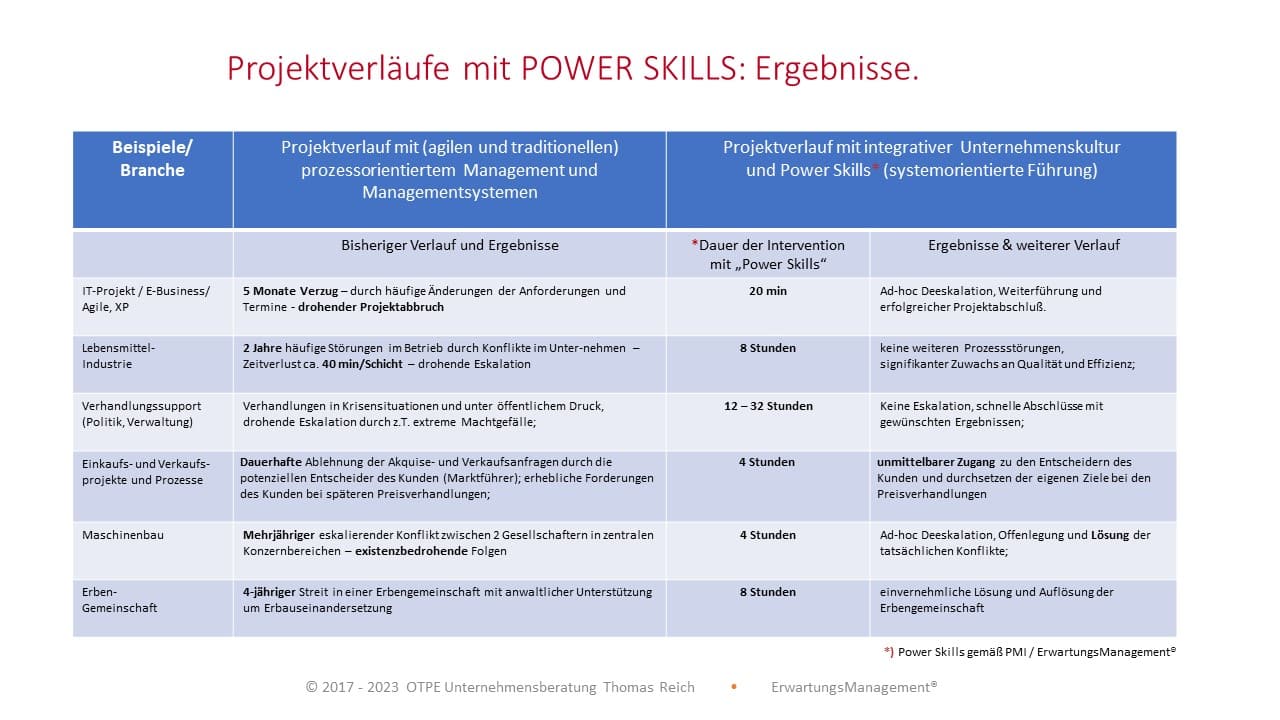Four special power skills in project management
Perhaps you also know various high-performance teams that are strong in implementation? Teams that seem to succeed at everything. For example, they built Hong Kong International Airport “on time and under budget” or successfully transformed VEB Carl-Zeiss-Jena into a market economy. Teams that solve problems in IT projects within minutes that put other teams months behind schedule, or that assert their interests in negotiations even against seemingly overpowering parties.
I have had the privilege of working in and with such teams for more than 30 years. First as an employee, today as a consultant, conflict manager and mediator. It is always interesting for me to see that these teams implement their projects equally successfully with Scrum or the waterfall model and that the mindset of the stakeholders plays no role for them. They “take people as they are”. Even difficult stakeholders. Even in difficult situations. What is their secret? What do these teams do differently?
Ten success factors in projects
What are the success factors in projects? The Project Management Institute (PMI) has identified ten of these success factors in its “Pulse of the Profession® Report 2023”:
- High level of maturity in benefits realisation management
- Low level of scope creep
- Regular application of standardised risk management procedures
- Continuous stakeholder engagement processes
- High organisational agility
- High performance of the departmental / regional / divisional project management office
- High level of project management maturity
- Overall performance of the organisation-wide PMO
- Use of metrics to determine quality of work
- Use of metrics to determine adherence to schedule
What is special about the report, from my point of view, is the connection it makes from success factors to so-called power skills. According to the report, success factors are more pronounced in organisations that place a high value on power skills: “Step outside the iron triangle of scope, cost and time, and take note of the power skills that contribute to the everyday dynamics of project management.”
The report highlights four power skills in particular because of their special importance for project success. Since these skills coincide with my experience in crisis and conflict management in and for successful project teams and organisations, I will describe them in more detail below.
Power skill: corporate culture
A first important power skill of successful teams is their culture. It determines the way they work together, what goals they pursue, how they prioritise their actions, how they use management methods and processes.
In the report, culture is described as “organisational DNA”. An apt term, I think, because it highlights a fundamental difference from other, not so successful, companies. Unlike the majority of project teams and companies that follow the dictates of current management methods and systems and try to manage projects as a fragmented process chain, successful teams and organisations regulate the behaviour of stakeholders and processes in the context of the complexity and dynamics of the system, the whole. Always.
For them, processes and methods are means to an end. Their purpose is to ensure the continuity of the system, the company, the organisation or the team through their actions and results. If necessary, also in other ways, with other results, other processes and stakeholders. For them, change is not disruption. In their perception, disruptions are important impulses necessary for the achievement of goals. Impulses that indicate a possible need for adaptation, i.e. changes in the system, in the complexity of their environment.
In other words, for the success of the project, it is not so much the processes, not so much the methods and techniques that are decisive, but rather a consistent goal- and result-oriented cooperation. Or as the PMI report says: “Project management approach – agile, traditional or hybrid – also did not impact these results.”
The challenge of these teams is to ensure that the stakeholders adapt their individual actions to the changes in such a way that they are subsequently further motivated and committed to reliably working together in the sense of the system in a goal- and results-oriented manner.
In doing so, successful organisations do not reduce stakeholders, individuals or institutions or teams to a role or position in the process or to the results they are expected to produce. They put the behavior in relation to the goals and “fight” together for the best possible strategy, the best possible specific action of the stakeholders.
This means that in their corporate culture they consciously accept complexity and the associated multitude of different, even competing interests and positions, i.e. conflicts. Unlike in most management systems, where conflict and conflict resolution are accounted for as an additional expense, successful organisations perceive conflict and conflict resolution as an “official and scheduled” part of their culture and day-to-day business.
This way of dealing with complexity and uncertainty, conflict and change is an expression of a particular agile and organisational maturity. In my experience, this maturity allows them to use their competences many times more, actually in the sense of power skills, and thus to achieve their goals much faster and more reliably than other teams can.
Power skill: communication competence
Another difference between successful and less successful teams is how they communicate when they work together. They communicate to lead. They communicate to give the stakeholders confidence to deal with the changes and complexity.
This means that they inform the stakeholders “completely”. The stakeholders receive all the information they need to be able to plan and act optimally. In addition to the “figures, data, facts” relevant for controlling the process level, they also receive the information relevant for controlling the cooperation on the state and quality of the relationship between the stakeholders. About their motivation, commitment, acceptance or possible refusal to implement a task as agreed.
While the less and averagely successful teams work with management models that try to reduce the complexity of the system to a complicated linear process, the teams and organisations that are strong in implementation expand the complexity of their management models and systems. Management becomes leadership. They thus give their management system a soul.
Technically, the successful companies integrate a continuous feedback process into their management models and systems. Through this feedback loop, they communicate the information relevant to motivation and commitment of stakeholders for robust, goal- and result-oriented cooperation. This can be as simple as a glance, a heckle or a more complex “reporting” on stakeholder motivation.
As a result, they can recognise and eliminate possible disruptions and conflicts in the cooperation at the motivation and relationship level. In other words, long before they escalate and hinder or block the cooperation in a process as a dispute or “service by the book”.
Power skill: leadership and problem solving competence
Often, “relationship knowledge” alone is enough for even “only” averagely successful teams to implement a project more successfully than before, because their increased awareness enables them to perceive and solve possible disruptions as they occur and not only when they manifest themselves through damage.
The effective and highly efficient teams now go the famous “extra mile”.
They develop their competencies, their skills, into real power skills with little effort. While the less successful teams often argue for weeks or months about a task, its solution and execution, the successful teams have solved this conflict in a few minutes or hours. As a result, they have significantly more time and resources to solve the actual task faster and more reliably than others.
To this end, the teams with strong implementation skills develop and train not only their technical problem-solving skills but also their problem-solving skills on the motivation and relationship level, their leadership and conflict-solving skills.
This means that they learn to solve the problems on the motivational and relationship level just as systematically as they have learned to solve the problems on the professional level. To this end, they learn special mediative techniques and how to apply them.
As a result, in addition to the “numbers, data, facts” necessary to control the processes, they can, if necessary, also communicate the information relevant to controlling the cooperation about the quality of the stakeholders’ relationship and thus solve the problems on the relationship level themselves. Or, if necessary, they can integrate special processes or institutions such as an “Alternative Dispute Resolution Board” or qualified mediators into their management and communication processes, especially if, for example, due to the size or nature of the projects, conflicts and disruptions are to be expected that must not escalate.
Power skill: implementation, execution competence and the results
The introduction of the feedback process, the integration of the relational level into management models and systems turns process-oriented management systems into robust management tools and leads to paradoxical results. The paradox is that as the complexity and volume of information increases, the amount of communication required to govern the system as a whole is reduced many times over. From weeks or months often to minutes or hours.
Often the joy of the power and effectiveness of power skills does not last long. Their application often stands in the way of their success and their lack of acceptance in day-to-day business. Experience shows that it is not so much the power skills as the individual experiences that prevent stakeholders from using power skills systematically. If one translates “relationship building, collaborative leadership and problem-solving” with the necessity to engage with difficult partners in day-to-day business and to solve problems on the relationship level oneself, then the fascination and acceptance for the power skills are quickly lost.
This can be solved with a dedicated procedure for modelling and implementing the power skills. They are systematically integrated into the management system used by a team and summarised in a do-it-yourself tool. I call it: ErwartungsManagement® (ExpectationManagement). The DIY framework complements the management systems used by the project team with a resilient model of the relationship level and thus turns them into highly effective management tools that have proven themselves in day-to-day business.
Notes:
Thomas Reich is very happy to assist you in working with power skills, developing leadership and negotiation skills and alternative dispute and conflict resolution in project and process management. You can easily contact him via his very successful website.
If you like the article or want to discuss it, feel free to share it in your network.

Thomas Reich
As an M.Sc. (automation technology) and business mediator, Thomas Reich has been a mediator between the rational world of technology and management on the one hand and the complex world of team and employee management on the other for more than 30 years.
To this end, he builds bridges between people and their complex, sense-oriented behavior on the one hand and people as stakeholders, with their rational, process-oriented actions on the other. These bridges enable a wide variety of project teams and organisations to solve disruptions, disputes and conflicts in their processes unusually quickly and permanently.
In order to pass on this knowledge and make it easier for project teams, managers and organisations interested in better results to benefit from these strategies, he has systematised the procedure and summarised it in a do-it-yourself framework.


